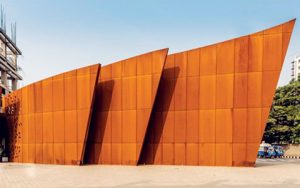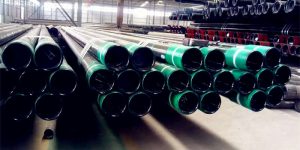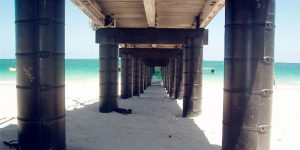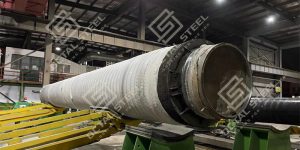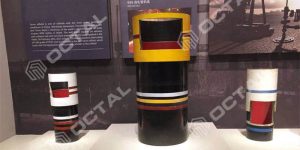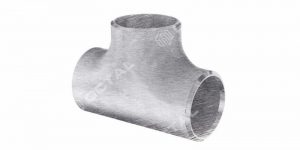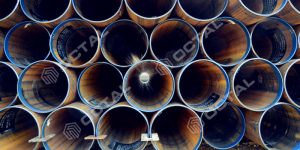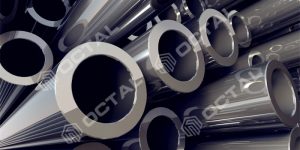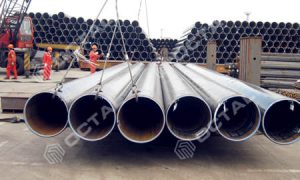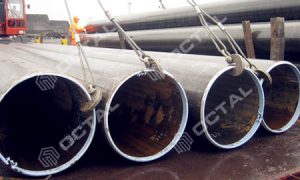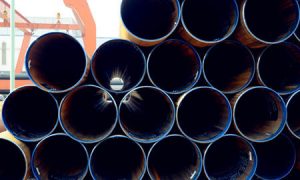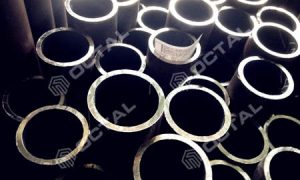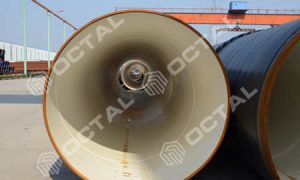Weathering Steel (Corten) – An Impressive Construction Material
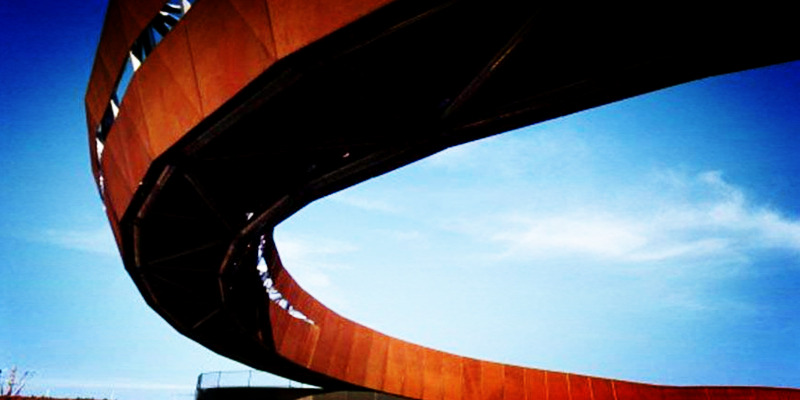
Weathering steel, is atmospheric corrosion resistance steel, also known by corten steel. It is the material that between normal carbon steel and stainless steel and with low alloy content. So corten steel is the carbon steel that added with copper (low Cu), Chrome (low Cr) elements, these elements exist to bring anti-corrosion performances. Besides, it has other advantages like high strength, plastic ductility, easy to profile, welding and cutting, corrosion, high-temperature resistant, fatigue resistant;
Impressive part is corten steel anti-corrosion resistant is better 2 to 8 times of common carbon steel, paintability is 1.5 to 10 times. By these benefits, the steel parts which makes from weathering steel has good performances against from rust, longer durability and less cost. So the material has been mostly saved.
Why to use weathering steel
This steel has been integrated with the new metallurgy methods, advanced technology and processes. Weathering steel (corten steel) is an super steel material and up to top at international level. Impressively anti-corrosive resistance makes weathering steel become a most popular material in out doors decorations and buildings.
When it comes to engaging yourself in architectural or landscaping projects, you might be able to find tons of building materials at your disposal. While each of them definitely tend to come with their fair share of pros and cons, you would want something which would be able to stand the test of time. After all, if that building material would not be durable, there would be no point in spending so much money in to building something.
Nice appearances
That being said, you might not have heard about corten steel, but you would definitely have come across it. With its rusty orange coloring and weathered look, this is something which you might have come across since this is so easy to spot. Other than that, you would also find it to be quite a popular building material for notable sculptures, along with common applications such as roadside piling.
Corten Steel (Weathering steel) Applications
Weathering steel mainly used in railway building, Auto-mobile, Bridge buildings, tower building, Photovoltaic power station and high way buildings, where need to material that exposed in the atmospheric. It also used in container making, oil and gas, sea port construction and drilling rigs, and the vessel parts that containing H2S.
What is weathering steel
As we say, Weathering steel is also called corten steel. Simply put, you would find this kind of a steel to be a trademark of the United States Steel Corporation. The thing with building materials is that you would often find a layer of rust to form over it during the course of time. No matter how much you would try to prevent it, it would definitely creep in. That is why United States Steel Corporation has come up with this idea. By giving a striking material, they would be able to prevent that layer of dust from being formed. Not only that, but it would also eliminate the steel from deteriorating more. As a result, you would not have to worry about getting it painted from time to time.
So, while all this might sound too good to be true, you would also have to look at things from a realistic point of view. This is because while the rust would continue to grow thicker, the steel would become thicker with no intention of becoming stabilized. After it would reach its breaking point, the steel would become perforated and would then need to be replaced. That is why it would be important to keep the difference in environmental conditions in mind when you would be choosing this steel.
How does corten weathering steel work?
With air and moisture being present, all or majority of low alloy steels would have a tendency to rust. The rate at which that would happen would depend on its access to moisture, oxygen, and atmospheric contaminants that would hit the surface. As the process would progress, the rust layer would form a barrier that would prevent the contaminants, moisture, and oxygen from flowing through. This would also then help to delay the rusting process to some extent. After some time, this rusted layer would also separate itself from the metal. As you would be able to understand, this would be a cycle that would repeat itself over and over again.
However, in the case of weathering steel, things would work in a slightly different way. While the rusting process would definitely start off in the same way, the progression would be slightly different. This is because the alloying elements in the steel would produce a rust layer that would be stable and adhere to the base metal. This would then help to form a protective barrier that would prevent further access of moisture, oxygen, and pollutants. As such, you would be able to experience a corrosion rate at a much lower level than what you would normally find on ordinary structural steel.
The metallurgy of weathering steel (corten steel)
The basic difference that you would be able to find between ordinary structural steel and weathering steel would be the inclusion of copper, chromium, and nickel alloying elements. This would help to give the corten steel its enhanced resistance to corrosion. On the other hand, when ordinary structural steel and materials standards for weathering steel would be compared, it has been found that all the other elements seem to be more or less similar.
ASTM A 242
Also known as the original A 242 alloy, this would have a yield strength of 50 ksi (340 Mpa) and the ultimate tensile strength would be of 70 ksi (480 Mpa) for light-medium rolled shapes. As for the plates, that would be up to 0.75 inches thick. In addition, it would have ultimate strength of 67 ksi and yield strength of 46 ksi, with the plates ranging from 0.75-1 inch in terms of thickness.
The rolled plates and sections which would be the most thickly rolled would have ultimate strength of 63 ksi and yield strength of 42 ksi.
As for its categories, you would be able to find it in Types 1 and 2. Just like the name suggests, both of them would be used for different applications, depending upon its thickness. In the case of Type 1, it would most normally be used in the construction industry, housing structures, and freight cars. As for Type 2 steel, also known as Corten B, this would mostly be used in passenger cranes or ships, and urban furnishings.
ASTM A 588
With ultimate tensile strength of 70 ksi and a yield strength of at least 50 ksi, you would be able to find this kind of weathered steel in all rolled shapes. In terms of plate thickness, that would be up to 4 inches thick. As for plates that would be at least 4 to 5 inches, the ultimate tensile strength would be at least 67 ksi. For plates that would range between 5 and 8 inches, the ultimate tensile strength would be at least 63 ksi and yield strength would be at least 42 ksi.
Typical uses of corten steel
As we know corten steel has been widely applied in different industries and projects, so what are the typical famous corten steel projects? Here below we listed some for your references and a further understanding about this steel.
Outdoor usages
As a matter of fact, weathering steel would most popularly be used in outdoor sculptures. Some of the primary examples would include the Barclays Center in Brooklyn, New York, and the Humanities and Arts Complex that is located at Leeds Metropolitan University. Also other famous corten steel sculptures:
Chicago Picasso Sculpture
Barclays Center
The Angle of North
Broadcasting tower in Leeds Beckett University.
and etc.
Bridges, Structurals
Other than that, it could also be used to build bridges and in other large structural applications. Some of these would include the Australian Center for Contemporary Art and the New River George Bridge.
Weathering steel has also been found to be a popular building material for the construction of intermodal containers, marine transportation, along with visible sheet piling. This is something which could easily be seen in London’s M25 motorway which has recently been widened.
When is the first time start to use corten steel
One of the first times corten steel was used was way back in 1971 when it was used to build Highliner electric cars by the St. Louis Car Company. The reason this was done was in an attempt to cut costs compared to using standard steel. However, the sad news is that durability of weathering steel did not seem to hold up as per expectations as rust holes started to appear in the cars. Upon further inspection, it was found that painting contributed to the problem. This is because weathering steel that has been painted would not be as much resistant to corrosion as conventional steel. This means that sufficient amount of time was not given for a protective layer to be formed over the steel. In 2016, these cars seemed to have gone out of the picture for good.
Premium outdoor steel material
Another aspect where you would find corten steel to be quite used is for outdoor construction and landscaping. Since it would be made of alloys that would cause the surface to develop a self-protecting rust, it has been found to be quite a favorite. The insulating patina would resist corrosion which would mean that no weather-proofing or painting would be required. In addition, it would also not compromise the structural strength of the steel.
The reason why weathering steel is preferred by so many of the landscaping designers is because of its versatility. This is because the benefits seem to range ahead more than its warm hue. Generally, you would be able to find it in plate and sheet form. With its durability and strength being combined, along with minimal thickness, it would allow itself to be served in situations where a concrete wall would overwhelm its surroundings or would not fit. Simply put, the versatility of weathering steel seems to know no bounds and would only be limited by the imagination of the designer.
Thanks to its midcentury industrial flavor and no frills, corten steel has been found to fit quite easily in to garden plans of contemporary nature. Since steel seems to have a slim and nice profile, minus the bulkiness of a concrete wall, it would really allow the true nature of the garden to come across. In fact, there would be so many different options that could be explored in this case.
Corten steel advantages
When looking at this specific kind of steel, it would make complete sense to take a look at some of the benefits. Continue reading below for that:
Low maintenance
When using weathering steel that has been exposed, periodic inspection and cleaning would be amongst the only things that would be required as far as maintenance is concerned. In terms of periodic cleaning, that would include rinsing the rusted surfaces with water in order to clean off any contaminates or natural debris. Other than that, dings and scratches would be benefitted by the oxide structure as it would heal through its own natural development without incurring the need for replacement.
Long term performance and cost savings
Since we are talking about long term investment, you would have to take a look at the savings that you would be able to enjoy. This is because if there would be no scope of savings, then there would really be no point in using corten steel for your construction projects.
Therefore, thanks to the durability of corten steel, you would be able to enjoy long term cost savings. This is something which could easily be realized by looking at the buildings which were built almost fifty years ago. In fact, this is being used throughout the world because of its durability and long term cost savings. By utilizing the protective and living nature of this material, it would also help to eliminate the dear costs that would be associated with painting. Not only that, but whole life costs could also be taken away with paint maintenance being done on the site. In cases where access for maintenance of furniture would be difficult or dangerous, or where the disruption of traffic would need to be minimized, then weathering steel would seem like an ideal choice.
Environmental benefits
Just like it would be important to save up on costs, it would be important that you do that while protecting the environment. With exceeding LEEDS requirements, along with other green qualities such as being made from content that has been recycles and 100% recyclable, you would be making a huge contribution to the environment. All you would have to do is browse a bit through the internet and you would be able to find a whole range of information being displayed there.
Dynamic texture and appearance
Weathering steel that has been aged will help to bring forth a multi-dimensional aspect to the appearance of buildings. This is because the patina would be able to transform multiple times a day, from wet to dry and back again. This would also bring along with it a sense of wonder and depth. In short, this steel would become much more than what you had anticipated. You would be able to realize the subtle appearance that would be hiding behind the exposed surfaces, waiting to be discovered and experienced in a new way. As such, you would be able to find very few building materials that would be able to offer this level of complexity and sophistication. With a variegated character and rich tones, the patina would continue to improve and blend with age. With the oxide layer further developing, earthier tones would come to light.
Minimizing lead time and cost
If you would like to get the minimal cost and most streamlined application, then it would be best to use raw corten steel. This is because it would help to reduce both lead times and cost that would be associated with cladding materials. When you would initially be applying this steel, you would be able to notice a flash of rust that would settle itself. However, that would not be something that you would need to be worried about since it would run off and bleed on to the adjoining surfaces. If you would like to handle this, then a catch system or gutter could be included in to the design. This would help to transfer or hide loose ferrites.
Limitations of weathering steel (corten steel)
Just like with any other sort of building material, weathering steel also seems to come with its own share of limitations. But this is not something which should come as a surprise. In fact, it would be good if you would get to know more about it. In this way, you would be able to make a smart and rational choice at the end of the day.
High chlorides content
Environments where the protective rust layer would spontaneously not be able to form on corten steel would be coastal environments. This is because the amount of airborne sea salt particles would be quite high. When the soil would continuously be deposited on to the surface, it would tend to develop the rust product. As such, it would then cause problems to the development of the inner protective oxide layer.
It would be for this reason that you should stay away from using corten steel products that would use high amounts of salt (chloride) as an initiator to the rust layer. This is because over the course of time, they would display the non-adherent nature of the oxide layer. In short, they would not provide the protective layer that they were initially supposed to provide.
De-icing salt
When using weathering steel, it would be highly recommended that you do not use de-icing salts as this would lead to problems in some cases. In usual cases, you would not find this to be an issue unless concentrated and consistent amounts would be deposited on to the surface. This would continue building up if rain would not be present to wash off this buildup.
Pollutants
You should avoid environments where there would be high concentrations of industrial pollutants or corrosive chemicals. While these kinds of situations would rarely be encountered today, it would not hurt to remain on the safe side. This is because several studies have brought to light that industrial environments which would contain low to normal levels of pollutants would help the steel in forming the protective oxide layer.
Retention or drainage traps
Continuous damp or wet conditions would prevent the protective oxides from crystallizing. This would especially be the case when water would be allowed to accumulate in pockets, also known as retention traps. This is because these areas would not be able to dry out completely, thus they would experience brighter colors and higher rates of corrosion. Dense vegetation and damp debris which would be growing around the steel could also add to the surface moisture retention being prolonged. As a result, you should avoid debris retention and moisture. In addition, you should also make it a point to provide sufficient amount of ventilation to the steel members.
Staining or bleeding
The initial flash of surface weathering to corten steel would typically lead to heavy rust staining on all the surfaces nearby, particularly concrete. This could easily be solved by getting rid of designs which would drain the loose rust products on to nearby surfaces.
Thus, that would bring us to the end of the discussion where weathering steel is concerned. Hopefully, all this information would be sufficient to help you make the right decision.







